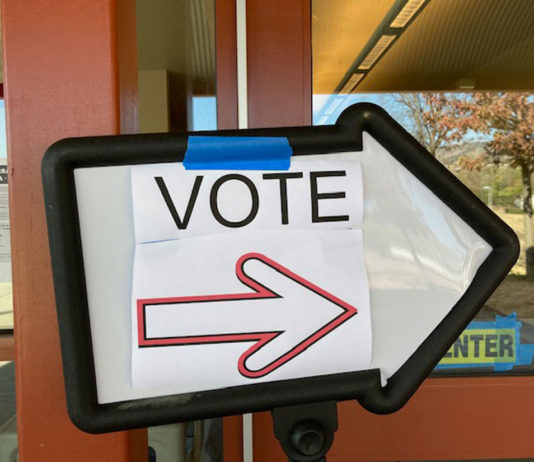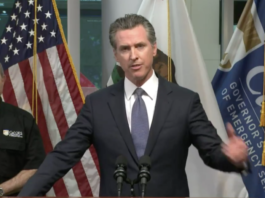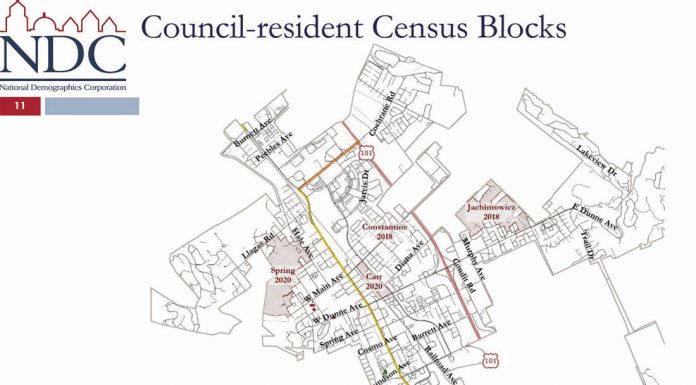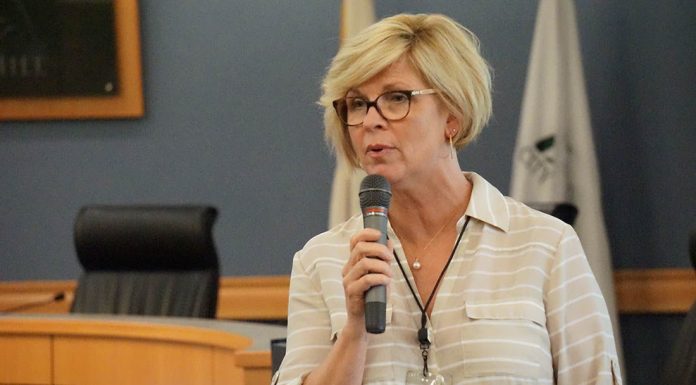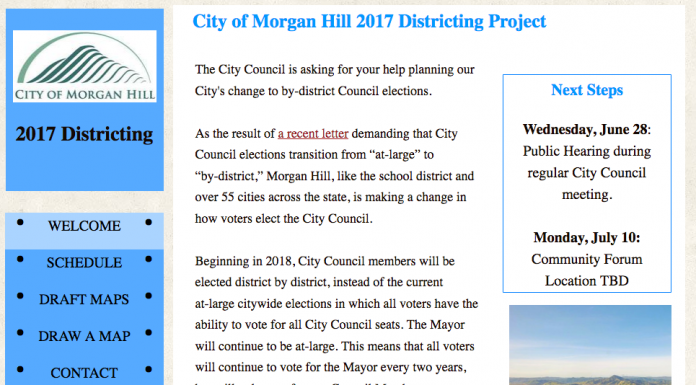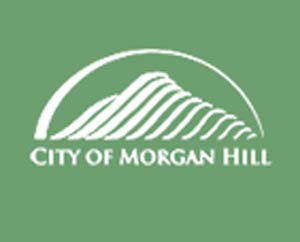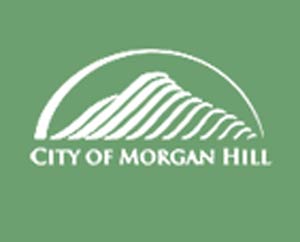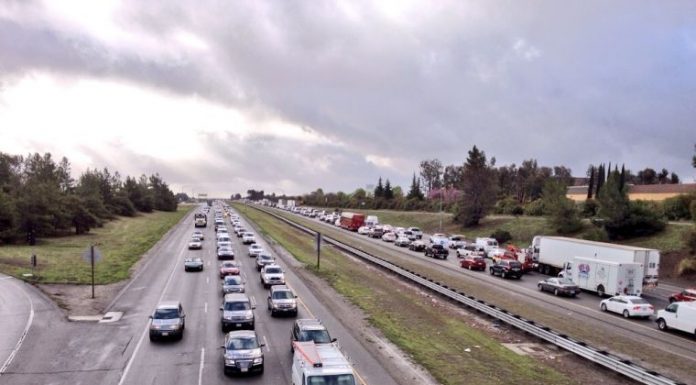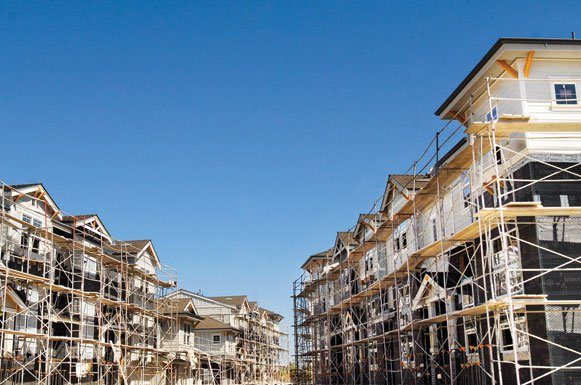By-district elections: Draft council maps available for public feedback
More than a dozen city council district map proposals, submitted by residents and a professional demographer, are available for public review on a website created to set up the new election system.The draft maps can be viewed at drawmh.org, which provides a wealth of map drawing tools and demographic information about the City of Morgan Hill.Citizens can review the submitted draft maps and offer suggested changes, or create their own maps depicting four council districts equal in population, according to Morgan Hill Communications Manager Maureen Tobin. Residents can submit maps until Aug. 14.The city council is scheduled to approve an official four-district map in late August or early September. The map they approve will take effect with the November 2018 council election, and remain in place at least until the 2020 U.S. Census is completed.The five-member (including the mayor) Morgan Hill City Council approved the change from the current at-large election system to the new district-based system at their June 7 meeting. The change was a response to a demand letter from an Oakland law firm that claims the at-large system is in violation of the California Voting Rights Act because it limits the influence of minority groups.Under the by-district system, the city’s four council members will be elected by voters within the council district in which they reside. The mayor’s seat will continue to be elected on an at-large, citywide basis, according to city staff.By approving the change, the council aimed to protect the city from a potentially costly civil rights lawsuit. But it also forced the city to fast track the process of notifying the public and creating four new districts equal in population, without gerrymandering.The draft maps posted on drawmh.org include 10 “population balanced” maps with four districts each containing roughly 9,500 Morgan Hill residents. Seven of these were created by Morgan Hill residents. The other three were drawn by National Demographics Corporation, with whom the city contracted for $43,000 to help with the districting process.Also posted on the website are three maps created by residents that are not population balanced, and two maps that depict a single district.
By-district elections: Test your mapmaking skills
Only 10 members of the public showed up for a July 10 workshop encouraging participation from residents in shaping new Morgan Hill City Council election districts, but the experienced demographer hired by the city to gather data and coordinate the process described that as a “good turnout.”
By-district elections: City creates new website, schedules July 10 workshop
City officials posted a new website containing interactive maps, meeting and workshop schedules and information devoted to the upcoming switch to a by-district election system for electing city council members.The website, found at drawmh.org, allows residents and voters to participate in the effort to create four council districts within the city limits. The section titled “Draw a Map” allows voters to propose their own preferred district boundaries that reflect the area or areas they think should be represented by a single elected official.An “Interactive Map Viewer” features layers of data such as the boundaries of individual U.S. Census population units within the city limits, and the number of residents within each unit. Draft maps, to be created in the coming weeks with input gathered from the public and a professional demographer, will be posted to the website.The site, which can be viewed in English and Spanish, also gives voters instructions on how to draw a proposed district map—on paper or electronically—and submit it to city officials.“The primary goal when drawing council election districts is to draw lines that keep neighborhoods together. So the council wants to know: what do you consider the boundaries of your neighborhood?” reads the “Welcome” section of the website.The next chance for voters to interact in person with city officials regarding the effort to draw new council districts will be at a July 10 community workshop, from 7 to 9 p.m. at City Council meeting chambers, 17555 Peak Ave.Under the by-district election system, each district will be represented by a single council member who resides within that district. Voters within each district will elect only one council member to represent them.This is a stark change from the at-large system that has elected council members for the last 100-plus years. Under that system, all voters throughout Morgan Hill could vote on every council seat that was up for election, regardless of where in the city each candidate lived.The council voted June 7 to make the change to a by-district system, in response to a “demand letter” from an Oakland law firm denouncing the at-large system as being in violation of the California Voting Rights Act. By adopting the change, the council is taking advantage of legal protections that limit the damages and costs that can be claimed in a potential civil rights lawsuit.The by-district system will start November 2018, when two seats—currently occupied by Councilman Rich Constantine and Councilwoman Caitlin Jachimowicz—will be up for grabs. The other two seats—now held by Mayor Pro Tem Larry Carr and Councilman Rene Spring—will be subject to the by-district change when they next appear on the ballot in November 2020.The mayor of Morgan Hill will continue to be elected at large under the change, according to city staff and drawmh.org. The mayor serves a two-year term.The May 2 demand letter from Oakland law firm Goldstein, Borgen, Dardarian & Ho, alleges that the current at-large system results in “vote dilution” and prevents under-represented groups such as Latino voters from “influencing the results of elections.”The city council has held two public hearings—on June 21 and June 28—on the election system change since it was adopted.At the June 28 meeting, Douglas Johnson, President of the National Demographics Corporation, gave a presentation about NDC’s proposal to offer mapping and demographic services to the city during the transition to a by-district system.Public meetings and workshops on the subject will continue until Aug. 23, when the council is expected to adopt official district maps created with input from the voters and NDC.NDC has recently offered similar services to the Morgan Hill Unified School District, when its seven-member board of trustees voted to change to a by-district election system in 2015, also under threat of a lawsuit. It has also offered redistricting services for the Santa Clara Valley Water District.The company’s contract with the City of Morgan Hill cost $43,000.
Council strives to alert every voter about election change
Local officials and members of the public have many unanswered questions about the details and logistics of Morgan Hill’s imminent switch from an at-large to a by-district election system, which the current council claims was forced upon them by the threat of a costly lawsuit.What happens if nobody tosses their hat in the ring to become a candidate in one or more of the new districts in an upcoming council election, leaving the voters in that geographic area with no one to elect? Can the city’s voters continue to elect its mayor on an at-large basis, or would this also violate the California Voting Rights Act, as at least one private attorney contends?On June 21, the Morgan Hill City Council held its first public hearing since deciding earlier this month to implement district elections, starting with the November 2018 balloting. The June 7 decision to make the switch was in response to a “demand letter,” dated May 2, from the law firm Goldstein, Borgen, Dardarian & Ho, alleging that the current at-large system, in which every voter inside the city limits gets to elect every seat on the council, violates the CVRA.Specifically, the at-large system—which the city has used since it was incorporated in 1906—results in “vote dilution” and prevents under-represented groups such as Latino voters from “influencing the results of elections,” according to the demand letter.The same law firm sent a similar letter to the Morgan Hill Unified School District in 2015, subsequently prompting the district’s seven-member board of trustees to make a switch to by-district voting.Based on council discussion June 21, city staff is recommending the council “create four voting districts in which each council member must live within the district they wish to represent, and voters may only vote for candidates within their voting district.”The staff report continues, “Any changes to the procedures for electing the mayor would need to be approved by the voters. Staff is not recommending placing a measure on the ballot at this time. Under staff’s recommendation, the mayor will continue to be directly elected through an at-large election allowing all residents (within) the city to vote for mayor.”There is a difference of opinion on whether an at-large mayor also violates the CVRA if the remaining council members are elected within individual districts. Attorney Mike Baller, who signed the May 2 letter from Goldstein, Borgen, said the council will not meet its requirements under the CVRA if it keeps the mayor’s seat elected at large.City staff is currently working out a contract with National Demographics Corporation to provide “experience, technical expertise and legal/political know-how to assist the city with a successful and inclusive transition to by-district elections,” reads the staff report. This work will include drawing the four geographic council representation districts within the city limits.The city is also planning an “extensive engagement effort” to make sure residents and voters are aware of the change. This effort includes distributing information in both English and Spanish, and an interpreter was available for Spanish speakers at the June 21 meeting.The public outreach process also includes periodic email blasts to residents—such as a June 22 message from city spokeswoman Maureen Tobin—and a series of upcoming public hearings. The next two public hearings are scheduled for June 28 and July 10 at council meeting chambers, 17575 Peak Ave.“During its discussions, the city…will strive to have an open, transparent and inclusive process,” Tobin’s email says. “More information will be available very soon, and we want to alert all residents of the need for your input and participation in establishing city council districts in Morgan Hill.”Reluctant changeMorgan Hill resident Doug Muirhead echoed council members’ views on the likely effectiveness of attracting Latino candidates under a district-based election system.“Changes to district elections under threat of legal action doesn’t guarantee that minority representation will happen,” Muirhead said June 21. “That’s the discussion I wish we were having.”He also wondered, “If we have a district, and no candidate applies, what happens to that seat?”When Councilmember Gordon Siebert resigned from the council halfway through his four-year term in 2016, the council eventually appointed Caitlin Jachimowicz to complete his unexpired term. That process started with an application and public interview process, in which more than 20 candidates participated.But the current council doesn’t even know if they would follow a similar process if confronted with a nameless ballot in a district election.Morgan Hill resident and Gavilan College Trustee Jonathan Brusco also addressed the council June 21, offering his experience from when the community college’s board switched to district voting in 2015—also under threat of a lawsuit.“It probably will not give you the best candidates,” Brusco said.Mayor Pro Tem Larry Carr said the most difficult part will be ensuring voters know about the change to a by-district system before it kicks in November 2018, which is crucial because the change is so drastic and fundamentally different from how local voters have elected their councilmembers in every election until now.Carr noted that when MHUSD implemented its by-district election system, even after a lengthy public outreach process, many voters still wondered in November 2016 why they were only voting for a single candidate.He also offered his criticism of the district-based system, and questioned whether it would attract high-quality candidates.“You can’t handicap (an election) and make a council good,” Carr said. “That’s all this is doing. I’m afraid it’s going to start politicizing everything.”By approving the change to by-district elections June 7—albeit reluctantly—the council “will take advantage of legal protection that enables cities to have a say in district boundaries and avoid costly litigation,” reads Tobin’s June 22 email.Staff reports and video recordings of the June 7 and June 21 council discussions can be found on the city’s website, morganhill.ca.gov.
Letters to the editor: District elections, Community Based Instruction
Many questions about district electionsDear Morgan Hill City Council,At the City Council meeting on June 7, you decided on your own to change to District elections for Council members.You had a very clear example that our residents will step forward on short notice and at a challenging time of the year to prepare applications and attend interview sessions. Over 20 well-qualified residents expressed their interest in filling the vacancy left by Gordon Siebert at the end of last year.Yet you claimed that the short time period and challenging time of the year prevented you from forming a Citizen Advisory Committee. So your direction to staff is to support workshops (which currently have no definition). Historically, most public comment at your meetings and workshops are one-way input to you, not actual discussion and debate.If a district has no candidates, does the council do an appointment? If so, would that be the same process that was used to replace Mr. Siebert?When you have formed districts, under what conditions could we still be sued for bias?How will district boundaries evolve over time? Does this become an issue with the city’s Residential Development Control System?What is the definition of equitable representation?Who represents those who are financially insecure?Who represents those who live in apartments or mobile home parks?Given the very different levels of resident involvement in our last election campaign and the following appointment process, we should have had a city-wide discussion on how to get more residents involved in selecting who decides how our city operates. Instead, we get a mandatefrom council to go to district elections for council members.More than once, Council member Rich Constantine stated that the city had done nothing wrong. Yet you chose to be stampeded by the lawyer trolls. And it was a choice for you to make, even though you claimed that the outcome was forced on you by the cost/benefit analysis.Thank you for your consideration,Doug MuirheadMorgan Hill Thanks for promoting WorkAbilityThe Morgan Hill Unified School District WorkAbility/TPP office would like to take a moment and thank those business who have signed on to open their doors to our students to assist them in learning and practicing new job skills. Please patronise these merchants and thank them for giving back to our community.If your business is interested in investing in the youth of Morgan Hill in this way, please give us a call at (408) 201-6300 ex. 42217. The student’s salary and workers compensation insurance are paid by the district, so it is a win-win!The following businesses have signed on so far: Ace Hardware/Johnson Nursery, Advance Haircuts, Bargain Hunters Outlet, Community Garage and Towing/Ponzinis, Goodwill of Silicon Valley, Granada Theatre / Willow Heights Mansion, GVA Cafe, Made in Japan/Europe/USA, Massive Sounds with DJ Guy, Maurizio's, Morgan Hill Foods, Prova California Table, Rosy’s at the Beach, St. Vincent de Paul’s Thrift Shop, TJ Maxx, Top Knot Salon and YMCA/CRC.WorkAbility I and the Transition Partnership Program of Morgan Hill Unified is a program for high school students in special education. For five weeks beginning June 19, a group of 14- to 21-year-olds will be hitting Morgan Hill for some Community Based Instruction (CBI).The purpose of CBI is to promote each student’s community knowledge through instruction, participation and real world experience.CBI combines functional academics, social skills and job skills. Students practice essential life skills like how to purchase items, order lunch and make sure they have received the correct change. They learn how to dress for work, fill out time cards complete with proper signature, and how to be independent and confident in their community.We hope to meet you while we are out and about this summer!Catherine CanoMHUSD Job Developer
UPDATED: Council moves to district elections
Editor's note: A previous version of this story reported the mayor's seat will continue to be elected by the voters at large under the chosen district-based system. City Attorney Don Larkin clarified this has not yet been determined. The council will determine how the mayor will be elected under the district system in the coming weeks.Starting November 2018, voters in Morgan Hill will begin electing their city councilmembers in a district-based election process. That’s a sharp change from the current and long-standing at-large system where every eligible voter within the city limits can choose who they want to represent the entire community.The sitting council unanimously approved this change at the June 7 meeting, not because they wanted to but because they’re certain it’s the only way to avoid a costly lawsuit that would force them to alter the election system anyway. In fact, councilmembers think the district-based system will have the opposite of its intended effect, and will make it more difficult for voters to gain adequate representation.Morgan Hill is now following a similar path as other nearby jurisdictions that have switched to by-district voting, prompted by threats from attorneys who claim the at-large system violates the California Voting Rights Act.The at-large system results in “vote dilution” and prevents under-represented groups such as Latino voters from “influencing the results of elections,” reads a May 2 letter to Morgan Hill City Manager Steve Rymer from the law firm Goldstein, Borgen, Dardarian & Ho.City Attorney Don Larkin recommended the council switch to a district-based election system at the June 7 meeting, based on the high improbability that the city could keep its current system in the face of legal challenges now that it has been threatened.“The California (VRA) has a strong preference for district elections,” Larkin told the council. “If someone can show there is polarization (of minority voters), they can sue… No city has ever successfully defended itself from claims of minority polarization” under the CVRA.Under a by-district or district-based election system, each elected official—in this case a city councilmember—must reside within the designated councilmember area boundary within the city limits, and is elected only by the voters in that area.City staff and councilmembers will spend the next three months conducting public meetings trying to get as much community input as possible as they establish four or five (depending on whether the mayor’s office remains elected at large) new council districts within the city limits. The council will likely consult with a demographer to help draw the city up into four districts of equal populations.The next public meeting on the matter will take place 7 p.m. June 21 at council meeting chambers, 17575 Peak Ave., the focus of which, Larkin said, is to begin gathering input from the community.This outreach is the most crucial part of the process, according to councilmembers who devoted the bulk of the June 7 discussion to determining the best methods to reach every voter in Morgan Hill.“I suggest we start now with informing the community,” Councilmember Caitlin Jachimowicz said.Between June 21 and Aug. 23 will be three more public hearings devoted to the task of dividing up the city into four council districts. A council subcommittee or citizens advisory committee (which one is yet to be determined) will oversee the drawing of draft district maps from June 29 to July 7. Draft maps will be published July 14.The district-based election system will roll out for the November 2018 election, in which the seats occupied by Councilmembers Rich Constantine and Jachimowicz will appear on the ballot. Councilmembers Larry Carr and Rene Spring will continue to serve the city at large until their seats next appear on the ballot in November 2020, after which those seats too will be elected within their respective new district.The council has not determined if the mayor will continue to be elected at large under this system, but it is currently leaning that way, Larkin said.Another option is to make the mayor’s office essentially a fifth council seat elected from within a city district equal in size and representation to those designated to the other four seats on the body.Attorney Mike Baller, who signed the May 2 letter from Goldstein, Borgen, said the council will not meet its requirements under the CVRA if it keeps the mayor’s seat elected at large.“If the city is trying to shield itself from being sued, this plan (an at-large elected mayor) will not do it,” Baller said.Under the current system, the mayor’s seat is up for election by the voters every two years, but the seat is equal in voting power to the other four councilmembers, who face election every four years. In many other cities, the office of mayor is assigned to a sitting council member, by a majority of the council as a whole, often on a rotating basis.Council: No other choiceCouncilmembers at the June 7 meeting had no praise for the new system, and were sharply critical of the May 2 letter signed by attorneys with the Goldstein, Borgen firm. All four councilmembers present—Mayor Steve Tate was absent—declared their only choice was to switch to a by-district system.The May 2 letter is “rubbish,” said Councilmember Rene Spring.“I’m all for being an inclusive city, but (this) will set wrong expectations, and it’s probably unlikely it will lead to the results those pushing the changes are hoping for,” Spring said. “I don’t think it will raise the inclusiveness. That will come with great candidates stepping up.”Jachimowicz added, “Going to district elections does not mean more people will have a voice…A law firm will get a large sum of money from the city.”Larkin explained to the council that the May 2 letter, titled “Demand for Compliance with California Voting Rights Act,” started a 90-day timeframe during which the city cannot be sued as long as the council chooses to change to a district-based system. Because the council made that decision June 7, any damages, fees and other costs claimed by the attorneys are capped at $30,000.Larkin said these costs could include the drafting of the demand letter and any oversight the firm might conduct to ensure the city is drawing adequate district maps.The letter from Goldstein, Borgen states the firm represents “Latino citizens and voters of the City of Morgan Hill.” It does not specify who these clients are.“Based on our review of election returns and demographic information… it is clear that disproportionately few Latinos, and other candidates favored by non-Latino voters, have been successful in winning election to the Morgan Hill City Council,” the letter states, in part. “For instance, none of the five current members of the City Council (including the mayor) is a Latino.”Morgan Hill attorney Armando Benavides, who unsuccessfully ran for seat on the council in the 2016 election, was one of three local voters who expressed support for the council’s change to a by-district system. Benavides, who is Latino, declined to say if he is one of the clients represented by Goldstein, Borgen. Benavides was an advocate for MHUSD board of trustees’ change in 2015 to a by-district election system.“It’s a better opportunity for all the community’s needs to be considered, because each councilmember has a particular district they have to account for,” Benavides said of the council’s June 7 decision.
Election: Three approved ballot propositions to help schools
With the passing of Propositions 55, 51 and 58 in the Nov. 8 election, State Superintendent Tom Torlakson commended voters for helping to improve California’s education system.
Election: Half-cent sales tax will fund transportation upgrades
The Santa Clara Valley Transportation Agency’s Measure B, a half-cent sales tax to fund transportation improvements, surpassed the two-thirds majority it needed to pass.
Election: Measure S wins by a landslide
The City of Morgan Hill’s long-standing growth control policy was never under threat of dying at the polls Nov. 8, as Measure S was resoundingly supported by 77 percent of those who cast ballots.

